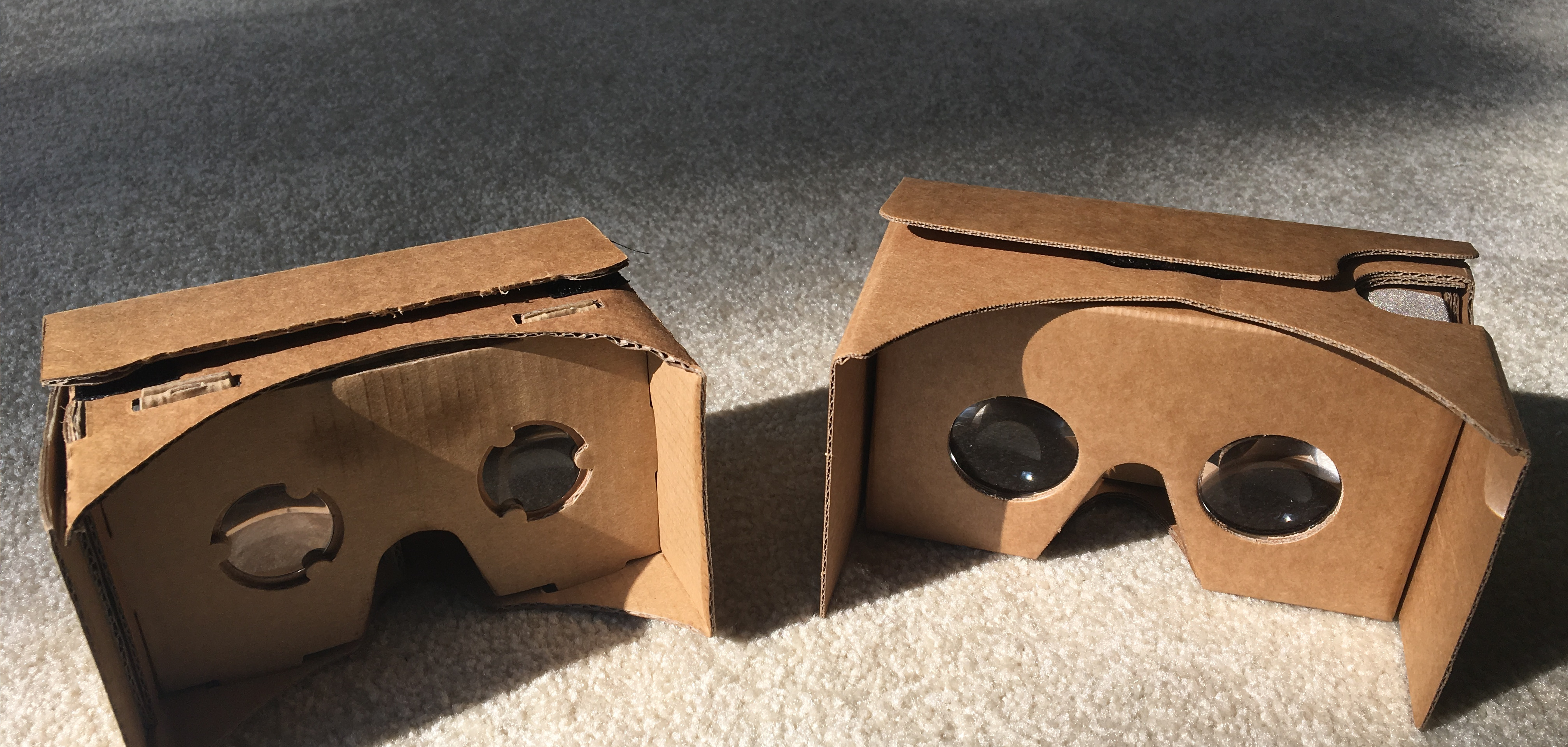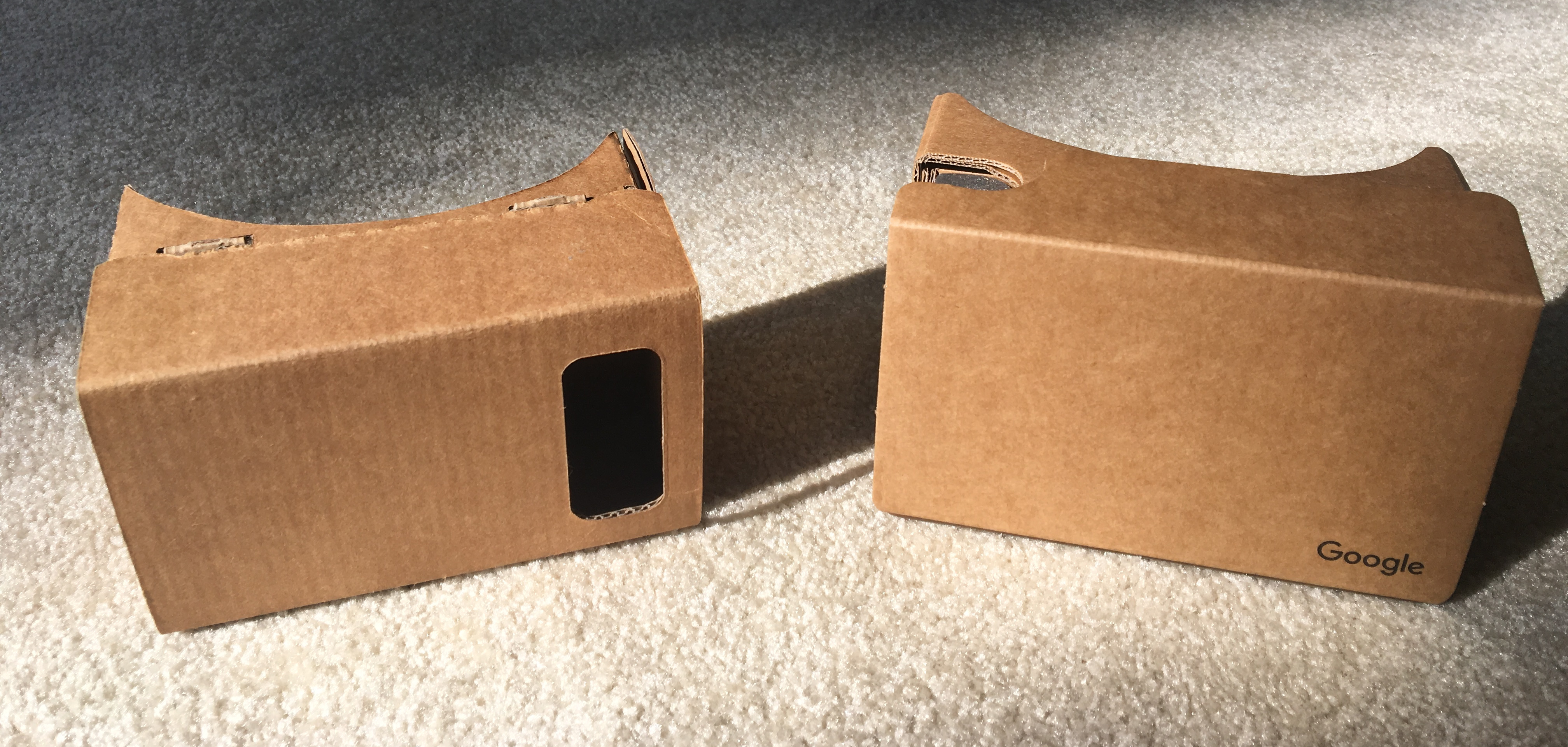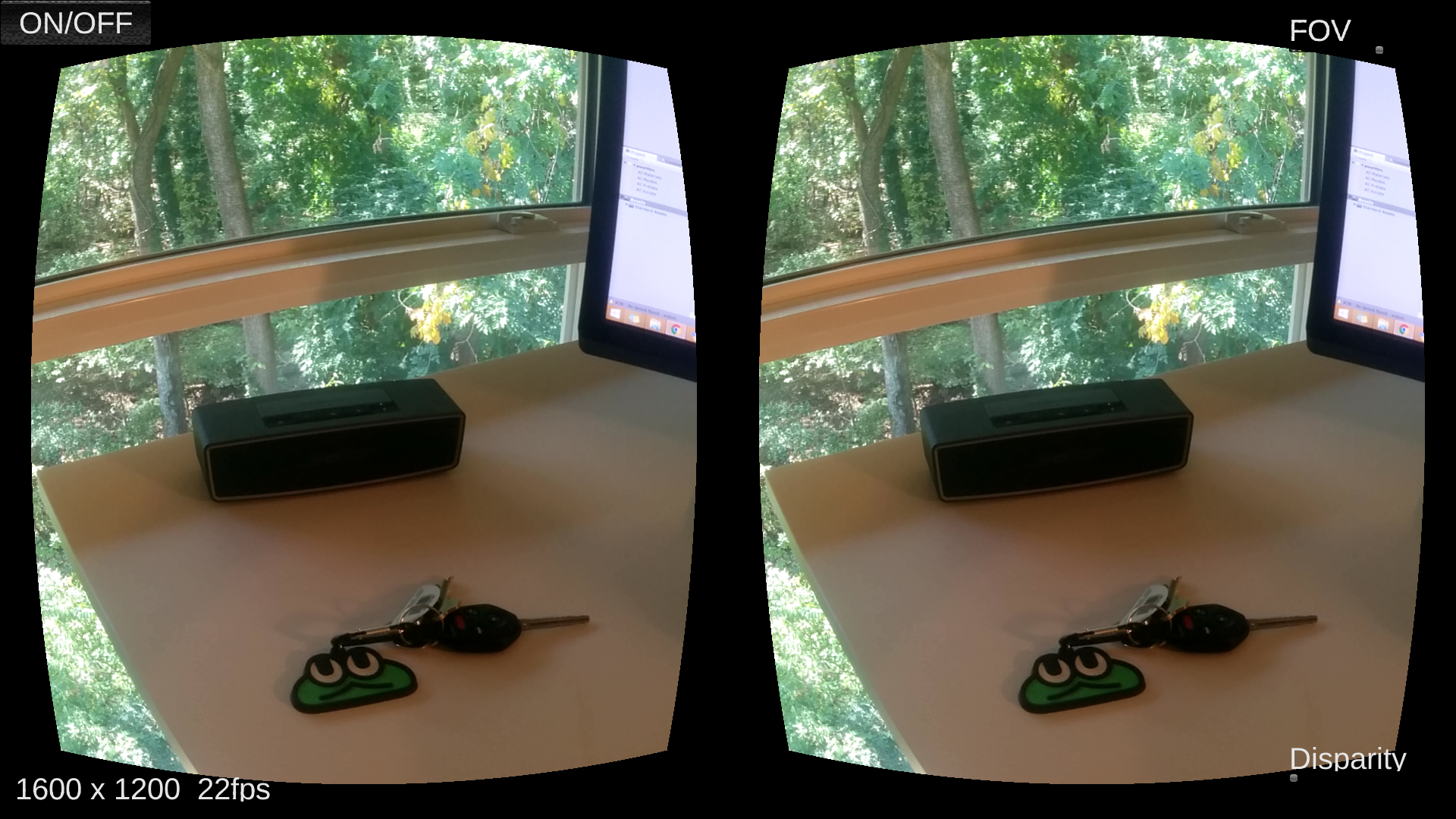Google Cardboard as "Augmented Reality" Headset
16 Oct 2016Google Virtual Reality headset evolved from Cardboard v1, to Cardboard v2, and to the most recent and elegant Daydream. Daydream supports limited devices, thus is excluded in the discussion here. For Cardboard v1 and v2, there have been a few discussion about the difference between them. As a VR / AR developer working with both headset, I looked at something different
Cardboard v1
- Supported phone size: 5.3” maximum (Nexus 5, iPhone 6/6s/7)
- Assembly: Self-assembly from a plain cardboard
- Trigger: Magnetic trigger (triky on iPhone)
- Camera see-through: Supported
- Price: Extremely cheap but the original version is hard to access now
Cardboard v2
- Supported phone size: 6” maximum (iPhone 6+/6s+/7+)
- Assembly: Almost no effort
- Trigger: Screen touch
- Camera see-through: Not supported
- Price: A little more expensive, but totally acceptable


Back and front view of Cardboard v1 and v2
Comments
- Since I have a Nexus 5 and iPhone 6s, Cardboard v1 is a better fit in terms of size. When I put iPhone 6s in Cardboard v2, the field of view is restricted by the size of phone screen.
- Magnetic trigger is a problem in Cardboard v1. I admit that it is a very clever design to take advantage of magnetic sensor of the phone, however, the change of magnetic field can be caused by a few reasons, including the movement of the phone itself with respect to the magnet, the change of orientation of the phone (with respect to earth magnetic field). Touch trigger is much more stable. Even Google Virtual Reality (GVR) SDK removed the support for magnetic trigger in its later releases. Developers have to switch to older releases to look for it.
- Self-assembly is never a problem for engineers.
- Camera see-through is a feature I liked most about Cardboard v1. With camera video, the tracking of user can be enhanced. Imagining SLAM or marker-tracking based localization integrated with VR / AR game! Vuforia supports image tracking for Cardboard v1 as a pose estimator.
What about Augmented Reality
Google Cardboard is basically a VR headset, here I am going to turn it into a “AR” headset!
Requirement
For an augmented reality application to run with Google Cardboard, there are a few requirement:
- Access to camera video of the phone
- Render two views representing the vision of two eyes
- Distort the image so that after the distortion of Cardboard lens, the images are natural for human’s vision
- Real-time!
Pipeline
The combination of Cardboard v1 and Nexus 5 is chosen. Unity3D is the development platform. The rendering pipeline is:
- Grab a video frame
- Optional: do whatever augmented reality processing
- Select and crop the part of vision for two eyes
- Apply barrel distortion to both views (barrel distortion)
- Composite two views side by side and blit on screen
Video frame is accessed by WebcamTexture object of Unity3D engine.
Shader
Within this application, we are not displaying real 3D scene, what we have is only augmented 2D image. We select the part of image to display with disparity, faking an AR experience for the user, all the objects in the scene will be perceived at a fixed distance determined by the amount of disparity. We need fast pixel displacement!
Step 3, 4 and 5 are achieved by shader, especially fragment shader. Shader is very fast and powerful. Unity3D shaders can be categorized into vertex shaders, fragment shaders and surface shaders. Vertex shaders and fragment shaders are basic types of shaders that are inserted into graphics pipeline of most modern GPU. On mobile devices, OpenGL ES 2.0 supports both of them. Surface shader is a special type of shader dealing with lighting and textures. In compilation stage, surface shaders are separated into a vertex shader part and a fragment shader part.
In our application, we have video frame in a texture object, thus, we only need to displace the texture coordinates of screen plane to represent barrel distortion and disparity of two views.
Step 3, 4 and 5 can be implemented into three shaders, which is easy to maintain and modify but will require more render passes. I put them altogether into one shader, since they are all fragment shaders. Source code is on Github: cardboard_seethrough.
In order to render the texture directly on screen, Graphics.Blit function is called upon rendering, and the source texture object is replaced with our processed video, the target render object is set to null. According to Unity3D documentation, a null target render object represents the screen. Then the shader material is specified in order to achieve correct Cardboard style display.
Demo
Nexus 5 runs this application smoothly, with 20-30 fps.


Screenshot with and without disparity
Several GUI elements are put on the GUI layer:
- ON/OFF to control camera access
- Display of FPS and current video resolution
- Slider to control Field-of-View
- Slider to control level of Disparity of two images
- 0 disparity indicates exactly same images on left and right
- 0.3 is the maximum here
Source code is on Github: cardboard_seethrough.
Google VR SDK is not used here.
Acknowledgement
- Discussion about Cardboard v1 and v2 on Briztech.
Thanks for reading!